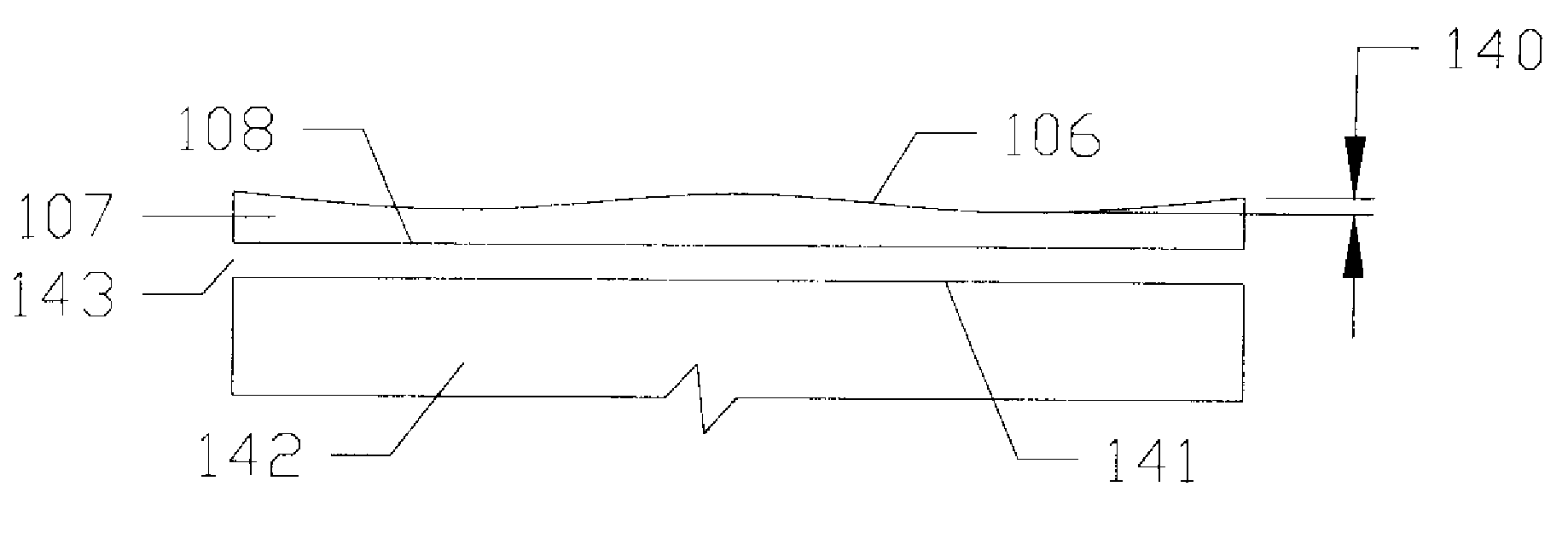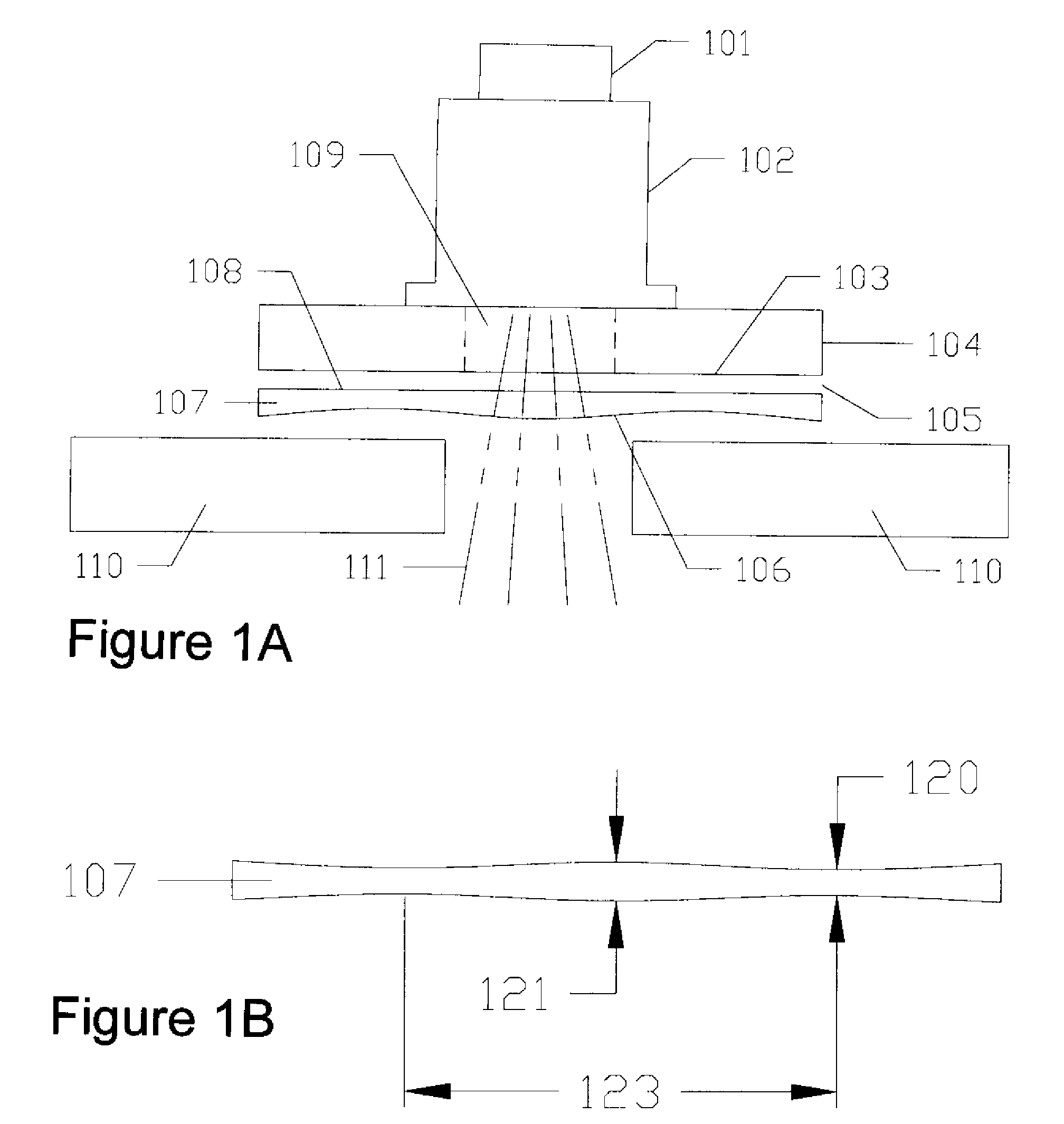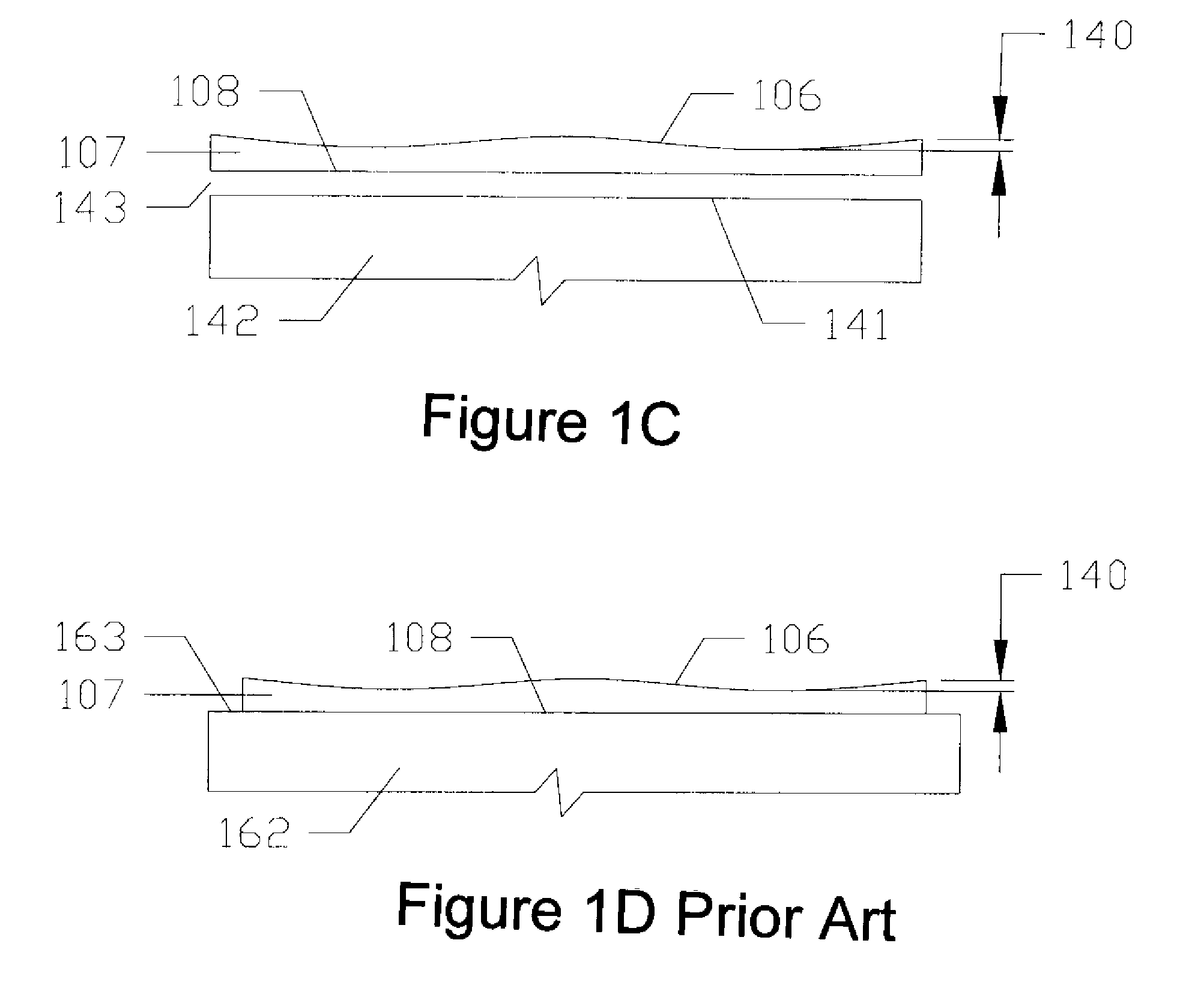Non-contact porous air bearing and glass flattening device
a technology of porous air bearings and flattening devices, which is applied in glass tempering apparatuses, gas current separation, manufacturing tools, etc., can solve the problems of flatness errors, edge curling of glass, etc., and achieve the removal of natural thickness errors in glass or substrates, reducing costs and many of the problems associated with substrate sized vacuum chucks
- Summary
- Abstract
- Description
- Claims
- Application Information
AI Technical Summary
Benefits of technology
Problems solved by technology
Method used
Image
Examples
Embodiment Construction
[0021]Various preferred embodiments of the invention will be set forth in detail with reference to the drawings, in which like reference numerals refer to like elements throughout.
[0022]A device is disclosed for supporting and transporting thin substrates by levitating them on a porous media air bearing creating a pressurized film of air and preloading them against the air film by negative pressure areas. The pressure can be distributed most uniformly across the pressure areas by defusing the pressure through a porous media. Since the entire top surface the conveyer or precision chuck has air pressure bleeding out the surface it is not dependant on flow though the gap to support an area of increased load. Another advantage of the porous media air bearing is that because the air escapes from the whole surface the velocity of the air is very low, eliminating vertical air streams. Vacuum regions can be holes or grooves connected via orifices to vacuum plenums within the conveyer or pre...
PUM
| Property | Measurement | Unit |
|---|---|---|
| thickness | aaaaa | aaaaa |
| pressures | aaaaa | aaaaa |
| thickness | aaaaa | aaaaa |
Abstract
Description
Claims
Application Information
 Login to View More
Login to View More - R&D
- Intellectual Property
- Life Sciences
- Materials
- Tech Scout
- Unparalleled Data Quality
- Higher Quality Content
- 60% Fewer Hallucinations
Browse by: Latest US Patents, China's latest patents, Technical Efficacy Thesaurus, Application Domain, Technology Topic, Popular Technical Reports.
© 2025 PatSnap. All rights reserved.Legal|Privacy policy|Modern Slavery Act Transparency Statement|Sitemap|About US| Contact US: help@patsnap.com



